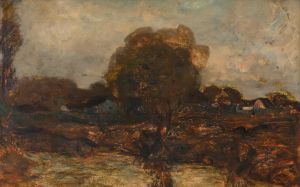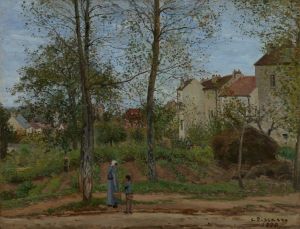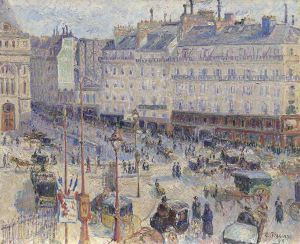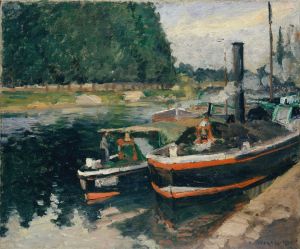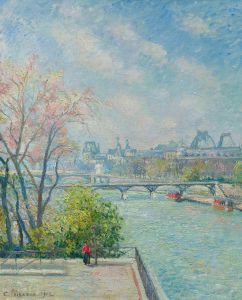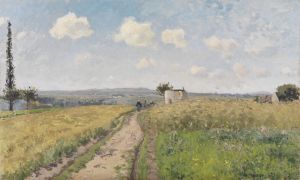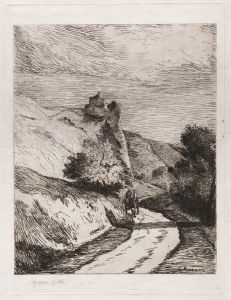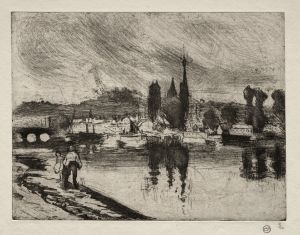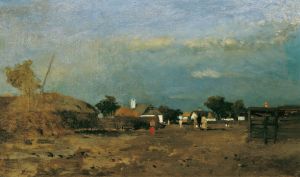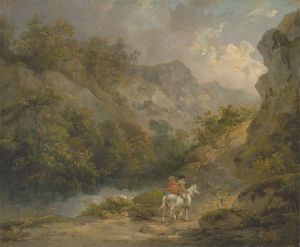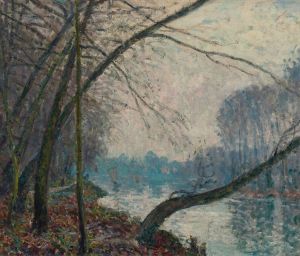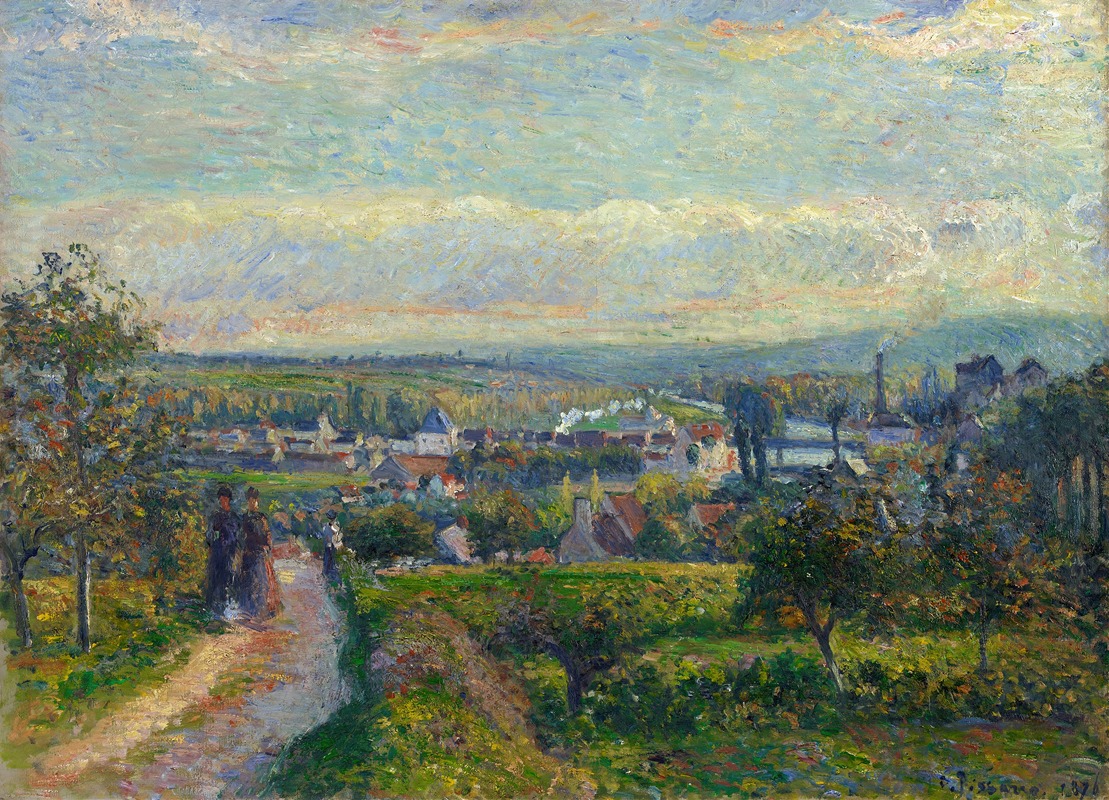
View of Saint-Ouen-l’Aumône
A hand-painted replica of Camille Pissarro’s masterpiece View of Saint-Ouen-l’Aumône, meticulously crafted by professional artists to capture the true essence of the original. Each piece is created with museum-quality canvas and rare mineral pigments, carefully painted by experienced artists with delicate brushstrokes and rich, layered colors to perfectly recreate the texture of the original artwork. Unlike machine-printed reproductions, this hand-painted version brings the painting to life, infused with the artist’s emotions and skill in every stroke. Whether for personal collection or home decoration, it instantly elevates the artistic atmosphere of any space.
"View of Saint-Ouen-l’Aumône" is a painting by the renowned French artist Camille Pissarro, a pivotal figure in the Impressionist movement. Pissarro, born on July 10, 1830, in the Danish West Indies, was a key contributor to the development of Impressionism and is known for his influence on both his contemporaries and successive generations of artists.
This particular painting, "View of Saint-Ouen-l’Aumône," was completed in 1873. During this period, Pissarro was deeply engaged with the Impressionist movement, which sought to capture the effects of light and atmosphere in everyday scenes. The movement was characterized by its loose brushwork, vibrant colors, and emphasis on capturing the momentary effects of light.
Saint-Ouen-l’Aumône is a commune in the Val-d'Oise department in Île-de-France, in northern France. Pissarro often painted rural and suburban scenes, and this work is an example of his interest in depicting the landscapes and environments surrounding Paris. The painting reflects Pissarro's fascination with the changing seasons and the effects of light on the landscape, a hallmark of his work during this period.
In "View of Saint-Ouen-l’Aumône," Pissarro employs a palette typical of the Impressionists, with soft, muted colors that convey the tranquil atmosphere of the scene. The composition likely includes elements such as trees, fields, and possibly buildings, arranged in a way that draws the viewer's eye into the depth of the landscape. Pissarro's technique involves short, broken brushstrokes that blend colors optically rather than mixing them on the palette, a method that enhances the vibrancy and dynamism of the scene.
Pissarro's work during the early 1870s was crucial in establishing the foundations of Impressionism. He was one of the few artists to participate in all eight of the Impressionist exhibitions held between 1874 and 1886. His commitment to the movement and his role as a mentor to younger artists, including Paul Cézanne and Paul Gauguin, underscored his importance in the art world.
"View of Saint-Ouen-l’Aumône" exemplifies Pissarro's dedication to capturing the essence of the natural world and the subtleties of light and atmosphere. His ability to convey the serene beauty of the French countryside has made his works enduringly popular and influential.
Today, Pissarro's paintings are held in major museums and private collections worldwide, appreciated for their pioneering approach to landscape painting and their role in the broader Impressionist movement. "View of Saint-Ouen-l’Aumône" remains a testament to Pissarro's skill and vision as an artist, reflecting his deep connection to the landscapes of France and his innovative contributions to the art of his time.





